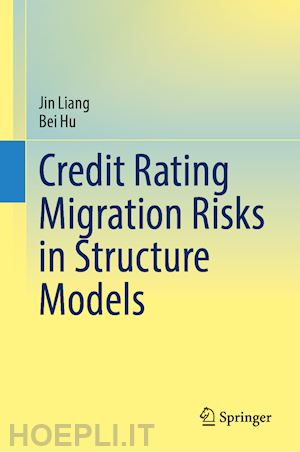
Questo prodotto usufruisce delle SPEDIZIONI GRATIS
selezionando l'opzione Corriere Veloce in fase di ordine.
Pagabile anche con Carta della cultura giovani e del merito, 18App Bonus Cultura e Carta del Docente
The book provides the latest research results on measuring Credit Rating Migration by mathematical methods. It brings about most popular mathematical models, methods and applications on this area, especially presents the latest development on structure models. It is systematically collects the models, methods and results in this area.
The book first introduced the financial background and preliminary mathematical theory. Then two mainstream mathematical models for measuring default risks, the reduced form model and structure model, are presented. The structure model for measuring credit rating migration risks is the main part of the book and authors prove the existence, uniqueness, regularities, asymptotic behavior, traveling wave and other properties of the solutions of the model. The structural credit rating migration model is also extended to more general case, such as stochastic interest rate, multiple ratings, region switch and so on. Some credit derivatives, and numerical analysis, parameter calibration and estimate of the migration boundary of the models are given in the last two chapters.
The book focuses on theoretical financial investigators, especially financial mathematical researchers and students. The book is involved various mathematical models, such as PDE, numerical simulation etc., some of them are interesting mathematical problems, so that, and a good reference book to study mathematical modeling in credit rating migration. It might also be used as a textbook for students in financial credit risks.
Financial Background.- Preliminary Mathematical Theory.- Mathematical Models for Measuring Default Risks.- Markov Chain Approach for Measuring Credit Rating Migration Risks.- Application of Reduced Form/Markov Chain Credit Rating Migration Model.- Structure Models for Measuring Credit Rating Migration Risks.- Theoretical Results in the Structural Credit Rating Migration Models.- Extensions for Structural Credit Rating Migration Models.- Credit Derivatives Related to Rating Migrations.- Numerical Simulation, Calibration and Recovery of Credit Rating Boundary.
Jin Liang, PhD of Applied Mathematics from Peking University, Professor in School of Mathematical Science, Tongji University. Her research interests focus on applications of PDE, especially on financial mathematics. She published more than 100 academic papers, including pricing financial derivatives, measuring credit risks, financial calculations, carbon reduction controlings etc. She is also a well-known popular science writer in China.
Bei Hu, Professor in University of Notre Dame, Department of Applied and Computational Mathematics and Statistics, is an expert in PDE and its applications. He published over 100 papers in a variety of aspects of PDE applications including Blowup Theory, Mathematical Biology, and Mathematical finance. In the past at the University of Notre Dame, he served as a department chair in the Department of Mathematics, department chair in the Department of Applied and Computational Mathematics and Statistics, Associate Dean in the College of Science. He also serves on the editorial board of several journals.










Il sito utilizza cookie ed altri strumenti di tracciamento che raccolgono informazioni dal dispositivo dell’utente. Oltre ai cookie tecnici ed analitici aggregati, strettamente necessari per il funzionamento di questo sito web, previo consenso dell’utente possono essere installati cookie di profilazione e marketing e cookie dei social media. Cliccando su “Accetto tutti i cookie” saranno attivate tutte le categorie di cookie. Per accettare solo deterninate categorie di cookie, cliccare invece su “Impostazioni cookie”. Chiudendo il banner o continuando a navigare saranno installati solo cookie tecnici. Per maggiori dettagli, consultare la Cookie Policy.